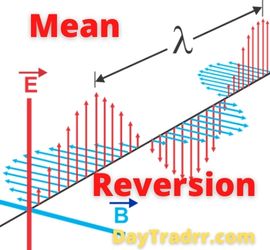What Is a Forward Contract?
 A forward contract is a tailored agreement between two parties to acquire or sell an item at a predetermined price on a future date. Forward contracts can be used for hedging or speculating, although due to their non-standardized character, they are best suited for hedging.
A forward contract is a tailored agreement between two parties to acquire or sell an item at a predetermined price on a future date. Forward contracts can be used for hedging or speculating, although due to their non-standardized character, they are best suited for hedging.
A forward contract, also known simply as a forward, is a binding commercial agreement. The forward contract is a sort of derivative. This is because its value is derived from the underlying asset that will be delivered on the specified date. To reduce price fluctuation, forward contracts can be utilized to lock in a set future price. The buyer of a forward contract takes a long position. Conversely, the seller of a forward contract takes a short position. If the underlying asset’s price rises, the long position benefits. The short position gains if the underlying asset price falls. While similar, forward contracts are not quite the same as futures contracts. There are subtle differences, so the two terms should not be used interchangeably.
Forward Contract – A Closer Look
A forward contract, unlike normal futures contracts, can be tailored to a specific commodity, amount, and delivery date. Normal futures contracts are standardized trades that cannot be customized. Grain, precious metals, natural gas, oil, and even poultry can be exchanged as commodities. A forward contract can be settled in cash or through delivery. Because forward contracts are not traded on a centralized exchange, they are classified as over-the-counter (OTC) instruments. This OTC structure makes it easier to set and tailor conditions. However, the lack of a centralized clearinghouse raises the danger of default. Forward contracts are not as accessible to ordinary investors as futures contracts. Primarily, this is due to their default risk and lack of a centralized clearinghouse.
Types of Forward Contracts
There are a few different types of forward contracts for investors.
- Closed outright – This is the most common type of forward. Two parties agree to perform a transaction at a predetermined price on a predetermined date.
- Flexible – With a flexible forward, the two parties can resolve the contract before the contract’s deadline. Settlement can take place in a single transaction or over numerous payments.
- Long-dated – Most forwards mature in a relatively short period of time, such as three months. Long-term forwards can persist much longer, perhaps up to a year.
- Non-deliverable – There is no physical exchange of goods. To settle the contract, the two parties simply exchange cash at the expiration date. The amount paid depends on the negotiated price and the market price of the underlying commodity or currency.
Forward Contract vs. Futures Contract
Forward and futures contracts are derivatives based on the value of an underlying asset. Both entail an agreement to acquire or sell a commodity at a certain price in the future. However, there are other minor distinctions between the two. A forward contract is not traded on an exchange, whereas a futures contract is. The forward contract settles at the conclusion of the contract, whereas the futures contract settles on a daily basis. Most crucially, futures contracts exist as standardized contracts that are not tailored to specific counterparties.
Another significant distinction is risk and how it is managed by a clearinghouse. In an investment transaction, a clearinghouse acts as a go-between for the buyer and seller. It is in charge of ensuring that the contract is properly resolved. Futures contracts are routed through a clearinghouse, whereas forward contracts are not. This suggests that both parties to the forward contract are willing to assume a higher level of credit risk. The risk is that one or both parties will breach the terms of the agreement. One method of mitigating this risk is to include a premium in the forward contract to cover the chance of default.
- Futures contracts are traded on an exchange.
- Settlement occurs daily, rather than once at the end of the contract.
- Futures contracts are standardized, rather than customizable.
Example of a Forward Contract
Consider the following forward contract example. Imagine a farmer who has two million bushels of wheat to sell in six months. Prices are currently high and Mr. Farmer is concerned about a possible drop in wheat prices. As a result, Mr. Farmer enters into a forward contract with an international broker. He agrees to sell two million bushels of hard red wheat in six months at a price of $9.50 per bushel, with a cash settlement. Wheat’s spot price has three possibilities in six months’ time. The price can either move up, down, or stay the same.
- It closes at exactly $9.50 per bushel – In this instance, neither Mr. Farmer nor the broker owes each other any money, and the contract is terminated.
- It closes higher than the contract price at $10 per bushel – Mr. Farmer owes the broker $1 million dollars ($10.00 – $9.50 = $.50 x 2 million bushels = $1million). This is the difference between the current spot price of $10.00 and the contracted price of $9.50.
- It closes lower than the contract price at $9.00 per bushel. The international broker will pay Mr. Farmer $1 million dollars ($9.50 – $9.00 = $.50 x 2 million bushels = $1 million). This is the difference between the contracted rate of $9.50 and the current spot price of $9.00 per bushel.
Forward Contract – Risks
Forward contracts have a large, liquid market. Many of the world’s largest firms utilize them to hedge currency and interest rate risks. However, forward contract terms are restricted to the buyer and seller. Therefore, details are not revealed to the broader public. As a result, estimating the size of this market is challenging. Because of its size and unregulated nature, the forward contracts market may be vulnerable. For example, a cascade series of defaults in the worst-case situation. Banks and financial corporations can limit this risk by carefully selecting their counterparties. Nevertheless, the chance of large-scale default exists.
Another risk associated with a forward contract is its non-standard nature. They are only settled on the settlement day and are not marked-to-market like futures. The risk increases when the forward rate in the contract is significantly different from the spot rate at settlement. In this instance, the financial institution that originated the forward contract is exposed to a higher level of risk. They face greater potential default or non-settlement than if the contract was marked to market on a regular basis.
Mark to market is a way of determining the fair value of accounts that fluctuate over time. For example, assets and liabilities. The goal of mark to market is to provide a realistic assessment of an institution’s or company’s present financial state based on market conditions. One of the important features of Futures contracts is that gains and losses are settled on each trading day. This Mark to Market (MTM) settlement means that the value of the contract is marked to its current market value.
Other Risks
- Regulatory Risks – There is no regulatory authority that governs forward contracts. It is carried out with the mutual permission of both parties to this contract. Because there is no regulating authority, the danger of either party defaulting grows.
- Liquidity Risks – Because the forward contract has limited liquidity, the choice to trade or not may be influenced. Even if a trader has a solid trading strategy, liquidity may prevent him from executing the plan.
- Default Risks – The financial institution that drafts the forward contract faces significant risk. This is in the event of the client’s default or non-settlement. However, forward contracts serve a role for both buyers and sellers. It enables them to control the volatility of commodities and other financial investments. Nonetheless, because they are over-the-counter investments, they are risky for both parties involved.
Up Next: Usain Bolt Net Worth – The Richest Runner in the World
 Usain Bolt net worth is approximately US$90 million. The retired Olympic sprinter still earns fees and royalties for endorsements, sponsorships, and guest appearances. Usain Bolt is one of the world’s most recognizable athlete celebrities. A standout sprinter, Usain holds official world records in the men’s 100 meters, 200 meters, and 4×100 meter relay. Also, he has an unofficial record in the 150 meters. The runner who calls himself the Lightning Bolt has eight Olympic gold medals and 19 Guinness World Records. Usain Bolt’s accomplishments off the track are equally impressive. The athlete has turned his speed and notoriety into a highly lucrative empire.
Usain Bolt net worth is approximately US$90 million. The retired Olympic sprinter still earns fees and royalties for endorsements, sponsorships, and guest appearances. Usain Bolt is one of the world’s most recognizable athlete celebrities. A standout sprinter, Usain holds official world records in the men’s 100 meters, 200 meters, and 4×100 meter relay. Also, he has an unofficial record in the 150 meters. The runner who calls himself the Lightning Bolt has eight Olympic gold medals and 19 Guinness World Records. Usain Bolt’s accomplishments off the track are equally impressive. The athlete has turned his speed and notoriety into a highly lucrative empire.
According to a YahooFinance estimate, Usain Bolt’s net worth is approximately US$90 million. When Usain Bolt was wrapping up his legendary career in 2017, Forbes reported that he was earning more than $32 million a year from his sponsorship deals alone.




